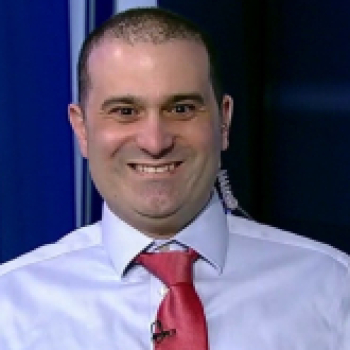Thank you so much for inviting me to speak today. I join others in thanking Mr. Stephan for his service, and in welcoming Ms. Stirbock to her new role as Chief Representative of the Deutsche Bundesbank in the United States. I look forward to working with both of you, and with your colleagues, in the coming years. The Federal Reserve places great importance on our relations with the Bundesbank. Few such relationships have been as important, over the decades, in promoting financial stability and prosperity around the world.
Governments, central bankers, and financial regulators labor today in the long shadow cast by the global financial crisis, and that likely will remain the case for many years. Against that background, I will touch briefly on fiscal and monetary policy here in the United States, before turning to financial regulatory issues.
It has long been clear that, starting in this decade, the United States would begin to face longer-term fiscal challenges due to the aging of our population and our high and fast-rising per capita health-care costs. Over the next 20 years, it is projected that the ratio of our retired elderly to our working-age population will increase sharply from about 23 percent to about 36 percent. And, as you surely know, our per capita health care costs are far higher than those of other advanced economies, and have risen over time at a faster pace than per capita income. The combination of these two factors will put the U.S. federal budget on an unsustainable path if appropriate measures are not taken.
At the end of 2007, just prior to the onset of the last recession, the United States had federal government debt equal to about 36 percent of the size of our annual gross domestic product (GDP)--a moderate level. Since 2007, and largely as a consequence of the recession and policy actions to help alleviate its effects, the U.S. federal government's debt-to-GDP ratio has increased to around 75 percent. It is projected to remain near this level for the remainder of the decade under current federal budget policies. This high level of federal government debt leaves U.S. policymakers with less "fiscal space" than may be required to deal with expected increases in retirement and health-care costs, or with unanticipated economic shocks.
Over the last few years, the fiscal authorities have cut federal spending and raised taxes, and our Congressional Budget Office estimates that these fiscal headwinds will reduce real GDP growth by about 1.5 percentage points this year from what it otherwise would have been. Nevertheless, as a nation, we have not yet addressed in a fundamental way our longer-term budget challenges, particularly those associated with federal health-care programs. So I have no doubt that fiscal policy issues will retain an important and highly contentious place on the political agenda for many years here in the United States, as in Europe.
I will turn for a moment to monetary policy. The Congress has tasked the Federal Reserve with conducting monetary policy to foster stable prices and full employment. Today, inflation is well below our 2 percent longer-term objective, as measured by prices for personal consumption expenditures. And although the unemployment rate has declined notably since its peak in 2010, it remains well above our estimate of a longer-run, more normal level. I expect that inflation will return gradually to our 2 percent objective, and that we will continue to make progress in reducing unemployment. In the meantime, the case for continued support for our economy from monetary policy remains strong.
With these fiscal headwinds and the lingering effects of the recession, growth has remained in the range of 2 percent since 2009. But today, our private sector shows real signs of underlying improvement. Auto sales are strong, as is activity in our energy sector. Our housing market, which was at the heart of the crisis, is now recovering strongly. House prices are rising, and that is supporting improvement in household net worth and consumer attitudes. Homebuilders are responding to this price signal with rising housing starts, which will support job growth. Together, these and other factors give grounds to hope for the kind of self-reinforcing cycle of economic growth that we have been waiting to see.
And as our economy has gradually improved, it has become possible, and appropriate, for the Federal Reserve to provide clearer guidance on the path of monetary policy. In all likelihood, this path will involve continued support from accommodative monetary policy for quite some time.
Meanwhile, financial regulators around the world are engaged in a historic and sweeping renovation of the global financial architecture. The scope of this global regulatory project is enormous, and I will touch on only a few of its elements. One of the most important goals is to ensure that banks have adequate capital to withstand severe financial stress. I am pleased that, just this morning, the Federal Reserve Board finalized the Basel III capital requirements for bank holding companies and Federal Reserve state-chartered member banks. The other U.S. bank regulatory agencies are on track to adopt the same set of rules for the institutions they regulate over the next week or so. The Basel III capital reforms will substantially improve the resiliency of global banks and will serve as the cornerstone of the global regulatory effort to safeguard the stability of the world's financial system.
Both in the United States and in Europe, some parts of the reform agenda will take longer to complete. For example, I note the ongoing progress toward achieving one of the most ambitious and important regulatory goals: the creation of a European banking union. It is clear that this challenging project will be the work of many years; indeed, it is not for an American to educate Europeans on the challenges of international cooperation. But the importance of this project for Europe's future is equally clear. The recent agreement on harmonizing national resolution regimes is an important achievement, and a milestone on the road to longer-term goals such as a single, centralized resolution authority.
Another reform that will take time to complete is the establishment of a global framework for resolving large, systemically important banks. Work to enable resolution of such institutions with diverse cross-border operations is especially important, and especially daunting. The challenge is not so much to allow such institutions to fail, but rather to contain their failure so that it does not inflict enormous collateral damage on innocent bystanders and the broader economy. As many of you know, in the United States, the Federal Deposit Insurance Corporation is developing a preferred approach to resolution for such rare cases: the single-point-of-entry (SPOE) approach. This approach may be gaining some traction internationally. In my view, SPOE can be a classic "simplifier," making theoretically possible something that seemed impossibly complex.
Under the SPOE approach, the home country resolution authority for a failing banking firm would effect a creditor-funded parent company recapitalization of the failed firm. To do so, the resolution authority would first use available parent company assets to recapitalize the firm's critical operating subsidiaries, and then would convert liabilities of the parent company into equity of a surviving entity. This approach would have the effect of concentrating the firm-wide losses on the parent company's private sector equity holders and creditors. The SPOE approach places a high priority on what your own President Weidmann recently described as "the principle of liability," meaning that those who benefit should also bear the costs.
Perhaps the greatest challenge for the resolution of a systemic global bank is the possibility that public or private actors in different countries might take local actions that would cause the overall resolution to spin out of control. Creditors and counterparties of solvent operating subsidiaries might rush for the exit if they are unsure of their status. As a subsidiary comes under increasing stress, authorities might preemptively ring-fence local assets. The process of resolution will need to be fully worked out and understood beforehand by market participants, regulatory authorities, and the general public. It will be absolutely essential to build trust among all parties, and especially between regulatory authorities.
Much remains to be done in eliminating "too-big-to-fail." The Federal Reserve is considering a requirement that systemic institutions maintain sufficient long-term debt at the parent company level to absorb losses and recapitalize operating subsidiaries in the event of failure. We expect to propose such a requirement later this year. I share the view expressed recently by several of my Board colleagues that the work of large bank resolution is not complete, and that further measures may be necessary. No one should doubt that the Federal Reserve is committed to completing this project.
Reaching agreement on a cross-border resolution process will be challenging. Our financial services industries and our economies differ in many ways. But we have a shared interest in financial stability, in reducing moral hazard, and in protecting taxpayers.
On that note, I will briefly discuss the Fed's proposal for oversight of foreign banks operating in the United States, which carries out a mandate from the Congress under the Dodd-Frank Wall Street Reform and Consumer Protection Act. Our proposal represents a targeted set of adjustments aimed at reducing the risks posed by the U.S. operations of large foreign banks to U.S. financial stability that were revealed during, and in the aftermath of, the recent financial crisis. The proposal is not intended to create a disadvantage for foreign banks in the U.S. market. Rather, the proposal is part of a larger set of regulatory reforms that substantially raises standards for all banking organizations operating in the United States and aims to achieve the goals we share with Germany: vigorous and fair competition and a stable financial system. Indeed, in some sense it follows the lead of the European Union and its member states in ensuring that all large subsidiaries of globally active banks meet Basel capital rules. We believe that our foreign bank proposal, which would increase the strength and resiliency of the U.S. operations of these firms, would meaningfully reduce the likelihood of disruptive ring-fencing at the moment of crisis that could undermine an SPOE resolution of a large foreign bank. We are fully committed to the international efforts to address cross-border resolution issues and to maintaining strong cooperation between home and host supervisors during normal and crisis periods.
I will close by observing that the international effort to strengthen financial regulation cannot succeed unless each nation understands the goals and challenges faced by its partners. The Federal Reserve and the Bundesbank have a long history. I believe there is a trust between us that is the basis for collaboration. I look forward to working with you to make the financial system safer and stronger.
Thank you.








Add a Comment
We encourage you to use comments to engage with other users, share your perspective and ask questions of authors and each other. However, in order to maintain the high level of discourse we’ve all come to value and expect, please keep the following criteria in mind:
Enrich the conversation, don’t trash it.
Stay focused and on track. Only post material that’s relevant to the topic being discussed.
Be respectful. Even negative opinions can be framed positively and diplomatically. Avoid profanity, slander or personal attacks directed at an author or another user. Racism, sexism and other forms of discrimination will not be tolerated.
Perpetrators of spam or abuse will be deleted from the site and prohibited from future registration at Investing.com’s discretion.